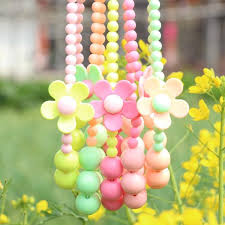The term "mountaineering" describes the sport of mountaineering, including ski mountaineering. Hiking in the mountains can also be a simple form of mountaineering when it comes to crawling, or short stretches of the more basic classes of climbing, as well as cross glaciers.
While the mountaineering began as an attempt to reach the highest point of the unspoilt vast mountains, it has branched into specializations that address different aspects of the mountain and consists of three (3) areas: rock boating, snow skiing and skiing, depending on whether the Route is selected over rock, snow or ice. All require experience, athletic ability and technical knowledge to maintain safety.
Mountaineering is often referred to as alpinism, especially in European languages, which means climbing with difficulties so high, and often snow and ice covered mountains like the Alps. A mountaineer with such great dexterity is called an alpinist. The word Alpinism was born in the 19th century to refer to climbing to enjoy climbing itself as a sport or recreation, in contrast to mere climbing during the hunt or as a religious pilgrimage, which had been made at that time.
The UIAA or the Union International of the Association of Alpinism is the world government in mountaineering and climbing, dealing with topics such as Access, Medicine, Mountain Protection, Security, Youth and Ice Climbing
Historically, many cultures have had awe-inspiring mountains, which they often regarded as sacred because of their proximity to heaven, like the Olymp for the ancient Greeks.
In 1492, Antoine de Ville, lord of Domjulien and Beaupré, the first, the Mont Aiguille, was in France, with a small team, with ladders and ropes to ascend. It seems the first recorded climb of any technical difficulty, and was said to mark the beginning of the mountaineering.
In 1573 Francesco de Marchi and Francesco Di Domenico rose Corno Grande, the highest peak in the Apennine Mountains. During the Enlightenment, as a product of the new spirit of curiosity for the natural world, many mountain peaks were overcome for the first time. Richard Pococke and William Windham made a historic visit to Chamonix in 1741. In 1760, the Swiss scientist Horace-Bénédict de Saussure offered a reward for the first person to climb Mont Blanc,
In the early 19th century, many of the Alpine peaks were reached; The Großglockner in 1800, the Ortler in 1804, the Virgin in 1811, the Finsteraarhorn in 1812 and the Breithorn in 1813.
While the mountaineering began as an attempt to reach the highest point of the unspoilt vast mountains, it has branched into specializations that address different aspects of the mountain and consists of three (3) areas: rock boating, snow skiing and skiing, depending on whether the Route is selected over rock, snow or ice. All require experience, athletic ability and technical knowledge to maintain safety.
Mountaineering is often referred to as alpinism, especially in European languages, which means climbing with difficulties so high, and often snow and ice covered mountains like the Alps. A mountaineer with such great dexterity is called an alpinist. The word Alpinism was born in the 19th century to refer to climbing to enjoy climbing itself as a sport or recreation, in contrast to mere climbing during the hunt or as a religious pilgrimage, which had been made at that time.
The UIAA or the Union International of the Association of Alpinism is the world government in mountaineering and climbing, dealing with topics such as Access, Medicine, Mountain Protection, Security, Youth and Ice Climbing
Historically, many cultures have had awe-inspiring mountains, which they often regarded as sacred because of their proximity to heaven, like the Olymp for the ancient Greeks.
In 1492, Antoine de Ville, lord of Domjulien and Beaupré, the first, the Mont Aiguille, was in France, with a small team, with ladders and ropes to ascend. It seems the first recorded climb of any technical difficulty, and was said to mark the beginning of the mountaineering.
In 1573 Francesco de Marchi and Francesco Di Domenico rose Corno Grande, the highest peak in the Apennine Mountains. During the Enlightenment, as a product of the new spirit of curiosity for the natural world, many mountain peaks were overcome for the first time. Richard Pococke and William Windham made a historic visit to Chamonix in 1741. In 1760, the Swiss scientist Horace-Bénédict de Saussure offered a reward for the first person to climb Mont Blanc,
In the early 19th century, many of the Alpine peaks were reached; The Großglockner in 1800, the Ortler in 1804, the Virgin in 1811, the Finsteraarhorn in 1812 and the Breithorn in 1813.









































































